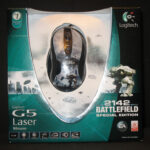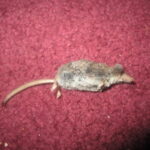Mice can be a huge pain if they decide to take up residence in your home. We are often alerted to their presence not by actually seeing them, but rather the evidence they leave behind. Mice are pretty shy and but come indoors looking for food and a place to nest where they won’t be disturbed. Once inside, you need to get rid of them before they multiply and turn into a full blown infestation.
When getting rid of mice, there are two basic means for dealing with them: lethal and non lethal. Lethal mouse control measures include snap traps, sticky traps, poison and of course cats. Non lethal methods are limited to a small variety of “humane traps”, which confine, but not kill, mice.
Snap traps are probably the most effective and humane of the lethal traps. A snap trap lures a mouse in with bait, which triggers the spring mechanism that snaps the mouses neck- killing it instantly. Sticky traps can be just as effective at catching mice, but are far less humane. Sticky traps are simply sheets of extremely sticky paper. Once the mouse walks onto this paper, it is permanently stuck and may simply starve to death before the trap is checked by the homeowner. Poison should be a last resort method of removing mice from a home. It can be accidentally ingested by pets or children and can potentially contaminate ground water. For these reasons, poison should only be used by professionals. Cats are extremely effective at catching mice, but will often toy with them for hours, which is a bit cruel. Additionally, if your neighbors are using poison to control their mouse problem, your cat could eat a poisoned mouse and become extremely ill or even die.
Humane traps all work essentially the same. The mouse is lured in with bait and a door closes behind him. Once trapped, it’s up to the homeowner to retrieve him and set him loose outside. While it may feel nice to spare the mice you’re trying to get rid of, the truth is that simply letting them go outside means they’ll just find their way back in. If you’re going to use humane traps, be sure to let the mice go as far as possible from your or your neighbors’ houses.
Traps of any kind are most effective when they are place somewhere that the mice are active. Look for evidence of mouse activity including droppings, shredded bits of paper or boxes of cereal or rice with hole chewed in them. Once you find any of these signs, clean up the mess, throw out the food they got into and lay your traps. Check the traps once a day and, if using lethal traps, be sure to dispose of the mice using a plastic shopping bag to minimize the spread of disease.
Once you’ve gotten rid of your mouse problem, it’s time to keep them from coming back. Look for holes in your walls along the floor and outside along the foundation of your house. Anything larger than a dime is big enough for a mouse to fit through. Any holes you come across should be filled with cement, plaster or rigid wire mesh depending on the size and location. Lastly, move any trash barrels, wood piles or other debris away from your home.
Following these guidelines should take care of most minor mouse problems and keep them from returning. If you can’t get your mice under control quickly, call a professional as soon as possible to avoid serious property damage and health risks.





